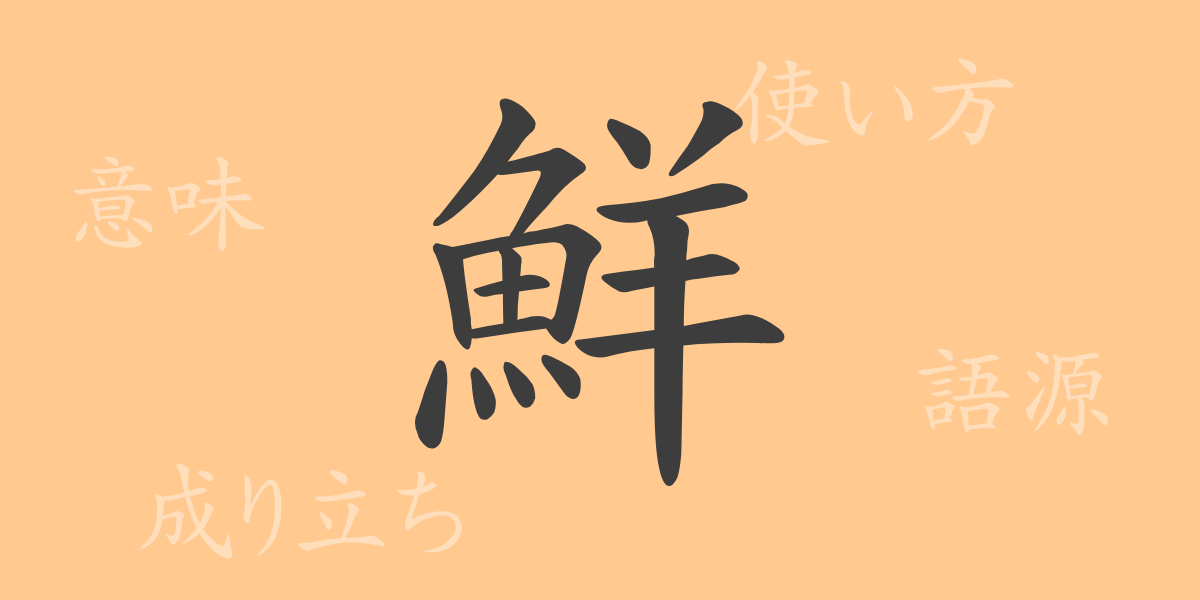In Japanese writing, kanji are pivotal elements that carry depth of meaning and a density of information. Understanding each kanji’s rich history and significance unveils the profound nature of language. This article highlights the kanji “鮮” (セン), exploring its origins and contemporary usage, and examining how it integrates into our language with a vivid image.
Origins of 鮮
The kanji “鮮” has been used since ancient times in China, originally depicting the freshness of fish. Comprising elements representing fish and sheep, this character evolved from ancient practices of offering fresh fish topped with sheep as sacrifices. Over time, it has come to symbolize freshness and newness, enduring into modern usage.
Meaning and Usage of 鮮
“鮮” conveys meanings such as “new,” “fresh,” “vivid,” and “bright.” It is often used to describe food as “fresh” and colors as “vivid.” Metaphorically, it can express concepts of “novelty” or “distinctiveness.”
Readings, Stroke Count, and Radical of 鮮
“鮮” is used in various contexts in Japanese, each carrying a different nuance:
- Readings: On’yomi “セン”, Kun’yomi “あざやか”
- Stroke Count: 17 strokes
- Radical: Fish (うおへん)
Phrases, Idioms, and Proverbs Using 鮮
There are numerous phrases and idioms involving “鮮.” For instance:
- 鮮明 (せんめい): Meaning “clear” or “distinct.”
- 生鮮食品 (せいせんしょくひん): Refers to “fresh food.”
- 鮮衣怒馬 (せんいどば): A proverb meaning “vibrant clothing and spirited horses,” symbolizing youth and vitality.
Conclusion on 鮮
The kanji “鮮” embodies the concepts of freshness and vividness, making it a frequently used and important character in daily life. From food to color and even style of expression, understanding the rich meanings of “鮮” allows us to choose more colorful words and enrich our communication.

























